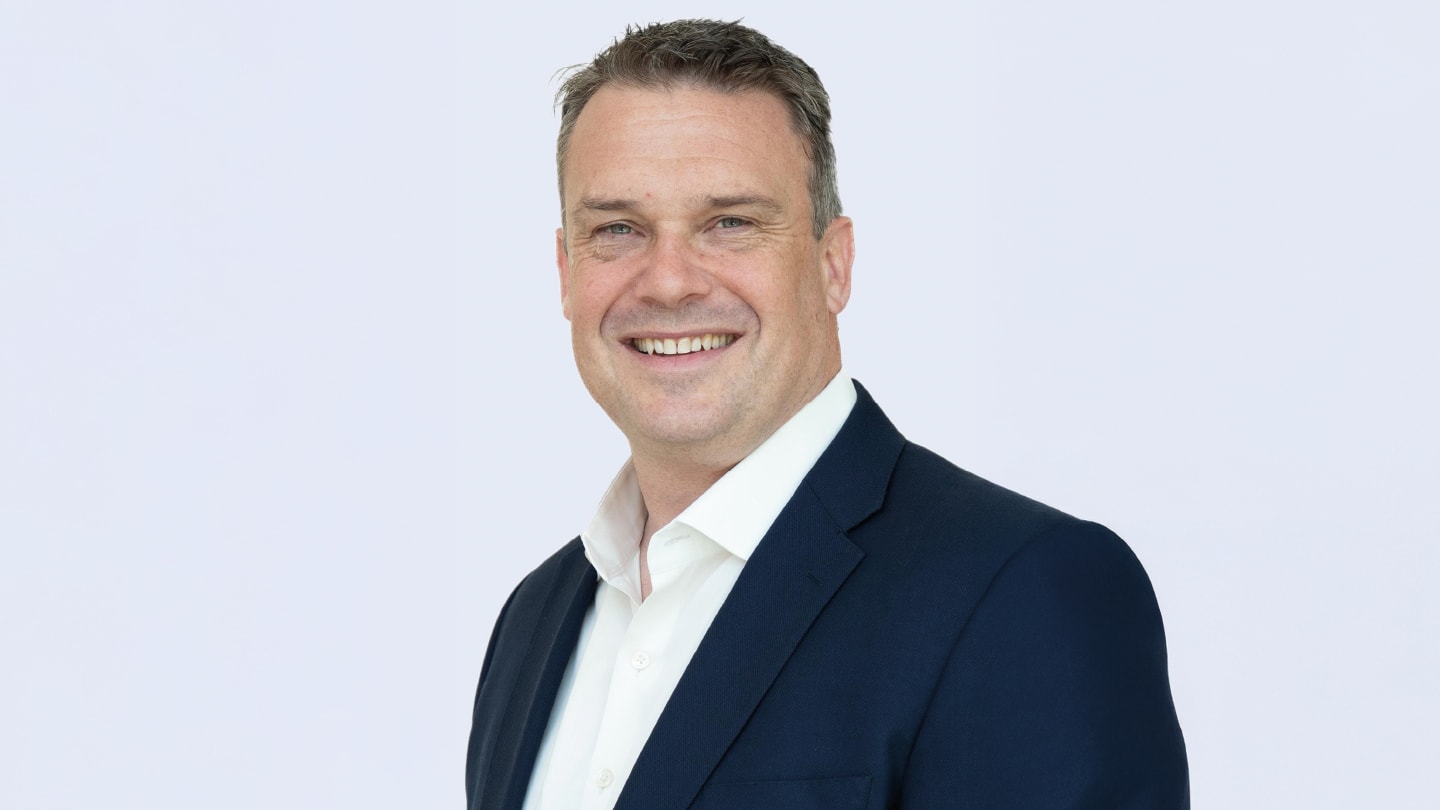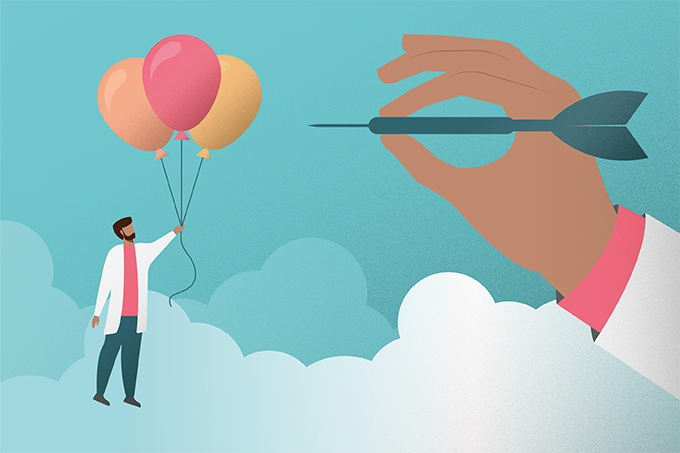
After nearly two decades in analytical science leadership, August Specht has stepped into his new role as Agilent’s Chief Technology Officer – where he’s rethinking how science is done, from miniaturized devices and intelligent laboratory ecosystems to stronger data standards and a culture that empowers creativity.
In this conversation, he lays out a vision for innovation at scale, reflecting on the role of AI as both a tool and a risk, and describing how analytical labs may transform in the decade ahead.
Have you always worked in science? Did you plan to pursue leadership positions?
In a way, I’m very lucky – I’ve known I wanted to be a scientist since I was 13 years old and my first science fair project. I got really excited about the act of making measurements because it felt like you were directly observing natural phenomena.
As I moved into industry and began developing products, I realized how much I loved creating with the customer in mind – and seeing their excitement when they received what we made. Along the way, I also discovered that the hardest part isn’t necessarily the science, but the people: coordinating, organizing, and working together. Science is advanced and demands deep thought, but it’s the people who ultimately make the biggest difference in creating something special.
That naturally led me to think more about leadership, organizational strategy, and how to enable people.
Was it a natural transition from the science side into leadership?
Yes, for me it was. I think every scientist reaches that moment when they step out of the lab and face the tough decision of whether they’ll keep doing hands-on work every day. I accepted that shift [out of the lab] and embraced the upsides of leadership – especially the chance to have a bigger impact across a global organization. At the same time, I’ve never lost that early love of science and measurement. Even if I’m not running experiments daily, I stay connected by working closely with scientists on both the development and customer sides. Some of my favorite moments are brainstorming with teams or customers, and making connections across groups worldwide. I still enjoy digging into the details whenever I can.
What does your role as CTO at Agilent involve?
As Chief Technology Officer at Agilent, I lead our global technology strategy with a focus on enabling innovation at scale across the organization. My role spans product development, organizational strategy, and scientific collaboration. We aim to create world class solutions for our customers, and I work closely with the development organizations and customers worldwide to help make connections and enable an ecosystem where science moves faster, ideas flow more freely, and innovation creates real value.
What are some of the big opportunities – and risks – for analytical instrumentation, especially with regard to automation and AI?
AI is top of mind for everyone right now – it’s a hot topic in the press, and in science we’re all considering its impact. On the opportunity side, I see two main categories.
First, productivity: automation boosts reproducibility and throughput in the lab, while AI-driven data processing can make analysis faster and more efficient. Second, insight: AI has the potential to reveal patterns or connections in experimental data that a human might miss or take much longer to recognize. That ability to uncover new knowledge is incredibly exciting.
We’re also exploring the idea of an intelligent laboratory ecosystem – where multiple instruments are aware of each other and of the broader experimental protocol. Imagine instruments that track the number of injections, identify sample types, and guide experiments by suggesting next steps. That’s where I see real potential.
Of course, there are also risks. We need to understand how models work, ensure transparency, and avoid “black box” decisions. Keeping humans in the loop is essential – validating results and guiding next steps. For me, AI should amplify scientific work and expand productivity, not replace scientists. Ideally, it becomes a super-smart partner in the lab
Which areas of analytical science do you think are ripe for disruptive innovation?
I see two big areas. The first is miniaturization and real-time analysis – moving instruments out of the dedicated lab and closer to where experiments or data collection happen. There’s a clear parallel in consumer health: take glucose measurement, for example. At first, it was an experiment in itself, that required a dedicated instrument, and today, for about $100, you can buy a patch that continuously measures glucose on your body. Analytical instruments are still at the earlier stages of that journey, but it’s easy to imagine smaller, more reliable, more compact devices that can sit right at the point of science.
The second is multimodal analysis. Many research questions require multiple methods to understand a cell, a biological system, or a physical sample – yet bringing all that data together into a single, unified view remains difficult. That’s a huge opportunity: integrating across modalities to unlock insights. As the saying goes, some of the biggest discoveries already exist in our data – we just haven’t seen them yet. AI will likely play a major role here.
Of course, the reason this hasn’t happened yet highlights a serious toolbox gap: weak data and communication standards. Compared to industries like telecommunications, our standards are far less developed. Pulling data together in meaningful ways is still not trivial. Many vendors – ourselves included – are thinking hard about how to build standards that enable highly organized, semantically rich integration, so we can finally realize the full potential of multimodal insights.
What do you see as the path forward for developing common standards?
It’s a great question – and one the industry is actively wrestling with. A few sector-specific standards have been proposed, particularly in pharma, and some academic groups have suggested frameworks as well.
Ultimately, though, it will take a combination of industry and the scientific community working together to drive true adoption. Still, I believe vendors will need to lead the charge, since all the data originates with the instruments. By publishing standards and moving toward greater interoperability, vendors can lay the foundation. In that sense, it’s incumbent on us to play a major role in shaping the path forward
How do you define innovation in a larger or more established company like Agilent, and how do you nurture it at scale?
For me, innovation is simply the act of making things better through creativity. And that applies broadly – not only to products, but also to the way we deliver services, support customers, and run our own operations. It’s about thinking end to end across the entire ecosystem.
On the product and development side, three things stand out in a company like Agilent. First, you have to create time and space for people to be creative – including room for disciplined prototyping, where new ideas can be explored in service of a larger goal.
Second, big companies don’t suffer from a shortage of ideas. They’re full of smart people and promising opportunities. The challenge is making connections – linking individuals who each hold part of an idea, or transferring a solution from one domain into another. That’s often where the best innovations emerge.
Finally, scale itself can be an asset, but only if you manage it well. You need ways for teams to connect and share ideas across a global organization, along with mechanisms to decide quickly which ideas to advance. That’s how you turn scale from a barrier into a driver of innovation.
What does an innovative team look like, especially on the science side? Is there anything else you’d suggest to encourage creativity?
For me, one of the biggest factors – and it depends a lot on team culture – is psychological safety. People need to feel comfortable proposing ideas that might fail, and to know those ideas will be challenged rigorously but fairly. Innovation often happens right at the edge of uncertainty, where you’re not sure if something will work.
Equally important is celebrating failures as learning opportunities. It’s easy to highlight the published paper with great results, but so much of the real progress comes from the paths not taken – the experiments that showed what doesn’t work.
Finally, I’d emphasize the balance of autonomy and alignment. In a large organization, you need a shared sense of purpose and strong connections across teams, but individuals also need freedom to explore within their domain. Striking that balance – autonomy within the bigger picture – is what really makes a team innovative.
And for you personally, what’s the main motivation?
What really motivates me is the diversity of customers we serve – from pharma and biopharma to environmental science, food safety, and semiconductors. I love collaborating with scientists around the world and helping them succeed. I don’t have a single challenge that drives me; they all matter, whether it’s developing better drugs, ensuring food and air safety, or advancing the technologies that underpin daily life. For me, the inspiration comes from seeing the scientific community thrive with the help of our products.
That’s also what makes this new chapter at Agilent so exciting. The company has an extraordinary legacy of innovation going back to Hewlett-Packard, combined with a huge future ahead. It’s a rare moment where we can both honor that history and embrace the opportunities in front of us – especially as new technologies like AI continue to emerge. That combination of strong foundation and ambitious outlook makes it an inspiring place to be.
And more broadly, it’s an incredibly exciting time to be working in this field. The pace of technology feels faster than ever – in computer science, in physical innovation like miniaturization, and in the ways we connect socially. As SaaS elements enter scientific products, we could see transformations similar to those in consumer tech – the kind of global connectivity we associate with platforms like Uber or Fiverr. Applied to science, that means easier collaboration and faster sharing of ideas worldwide. That, to me, is one of the most exciting parts of the scientific journey right now.
If you think about how miniaturization or multimodal data integration might progress in the next decade, what is your vision for the future of the analytical lab – or analytical instrumentation more broadly?
I see a few big shifts on the horizon. First, as instruments in the lab become more aware of each other, we’ll move toward a continuum of information. One instrument will know what experiment was just run on another, and can adjust its methods accordingly. Data will flow seamlessly across the organization, creating a more connected lab ecosystem.
Second, analytical tools will become more embedded into customer workflows. Rather than being purely general-purpose, instruments will be increasingly optimized for specific use cases. As coding and customization become easier, we’ll see tools tailored to the unique needs of different scientific domains.
Third, I envision a kind of scientific mesh – a global network where data and collaboration flow more freely through SaaS-based platforms. Just as consumer technologies have transformed connectivity, science will benefit from faster, easier collaboration across the world.
Finally, sustainability will be a defining priority. At Agilent, we’re thinking carefully about designing instruments that consume less energy, use fewer materials, and minimize solvents and chemicals. We’re also looking at the full lifecycle: ensuring instruments can be refurbished for a second life and recycled responsibly at the end. Reducing environmental impact while continuing to innovate will be central to the future of analytical science.
Is there a major hurdle when you think about this vision of the future that could prevent it from becoming reality?
I feel confident about the evolution of these systems, but the key will be bringing the scientific community – our customers – along on the journey. As with any new technology, some will wonder if they’re ready to adopt a different approach, so we’ll need to balance forward thinking with reassurance. That means ensuring the fundamentals – authentic, stable, reproducible data – remain in place. We can’t move faster than the community is ready for.
That said, I believe we’re entering a truly exciting era for analytical science – one where we move from stand-alone instruments into an age of systems. An ecosystem of instruments, data, and people working together at a higher level. That’s what inspires me most about the future.




